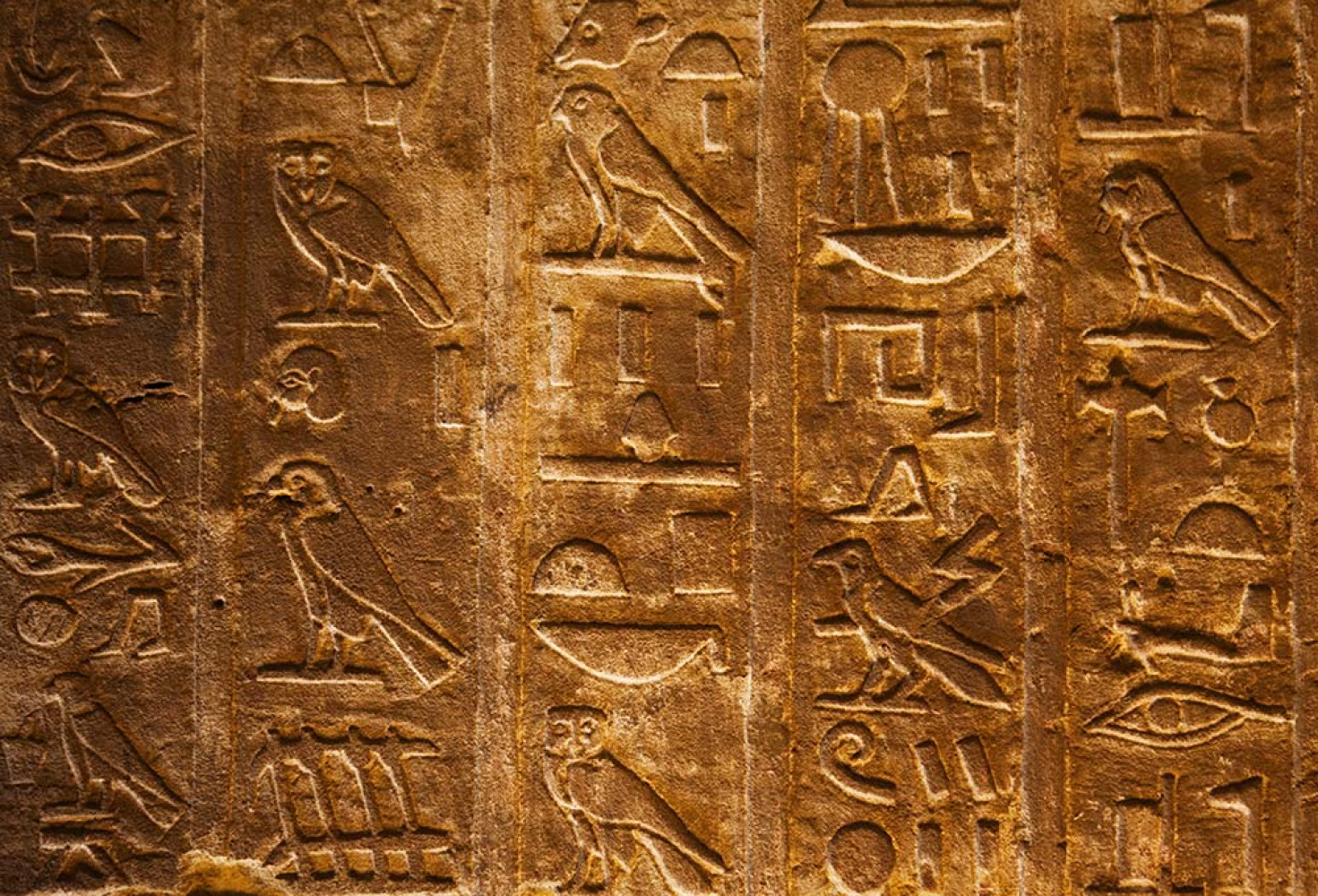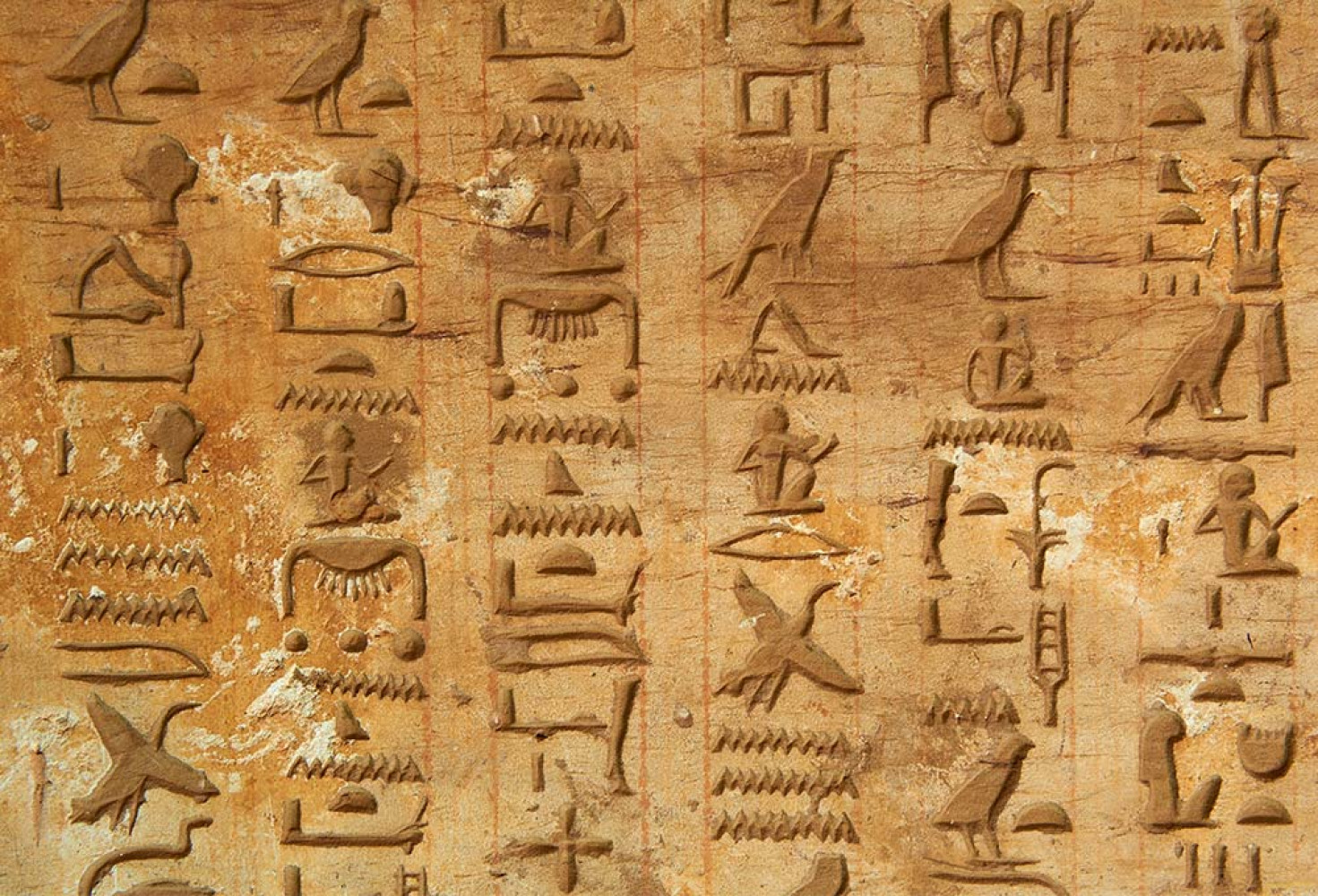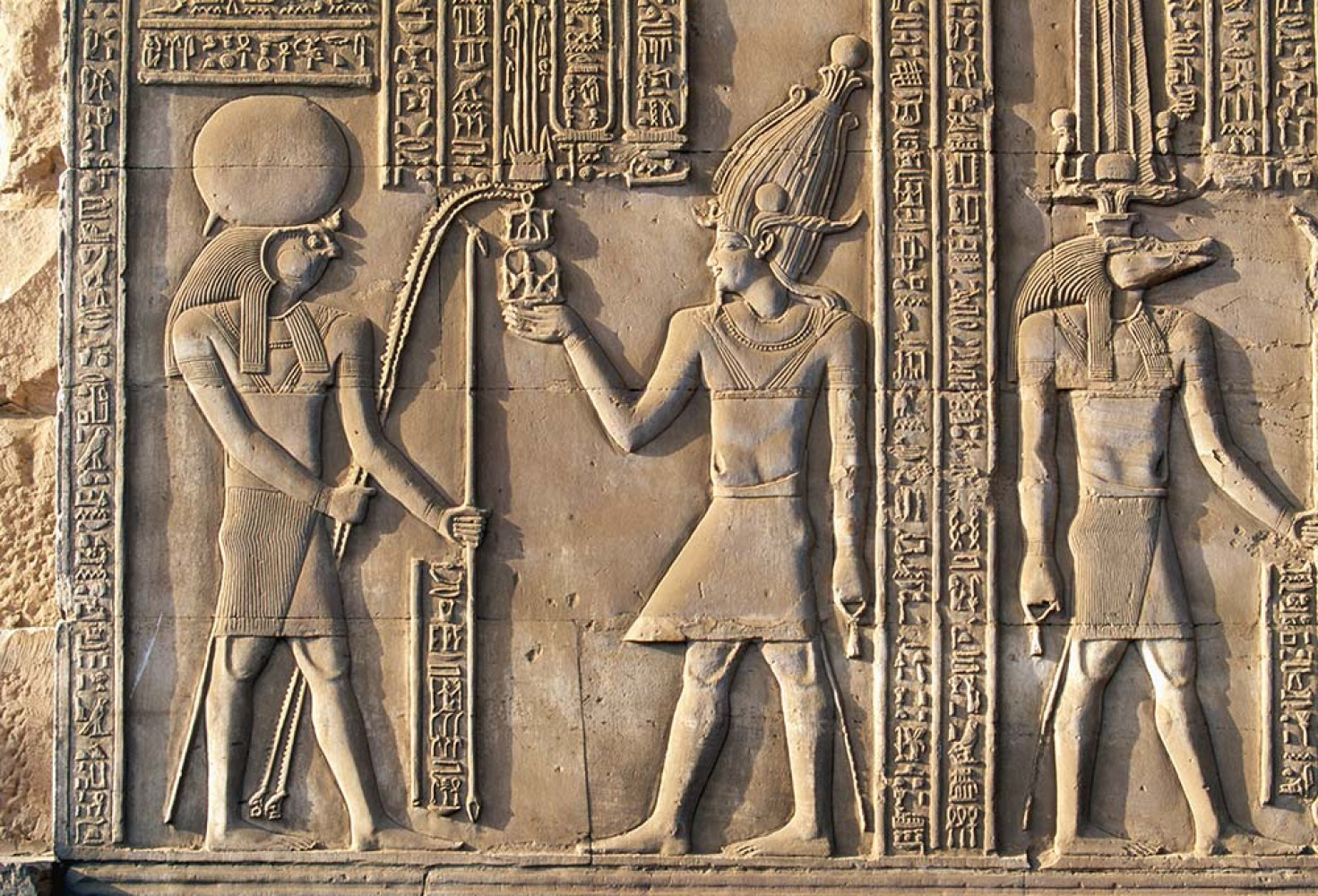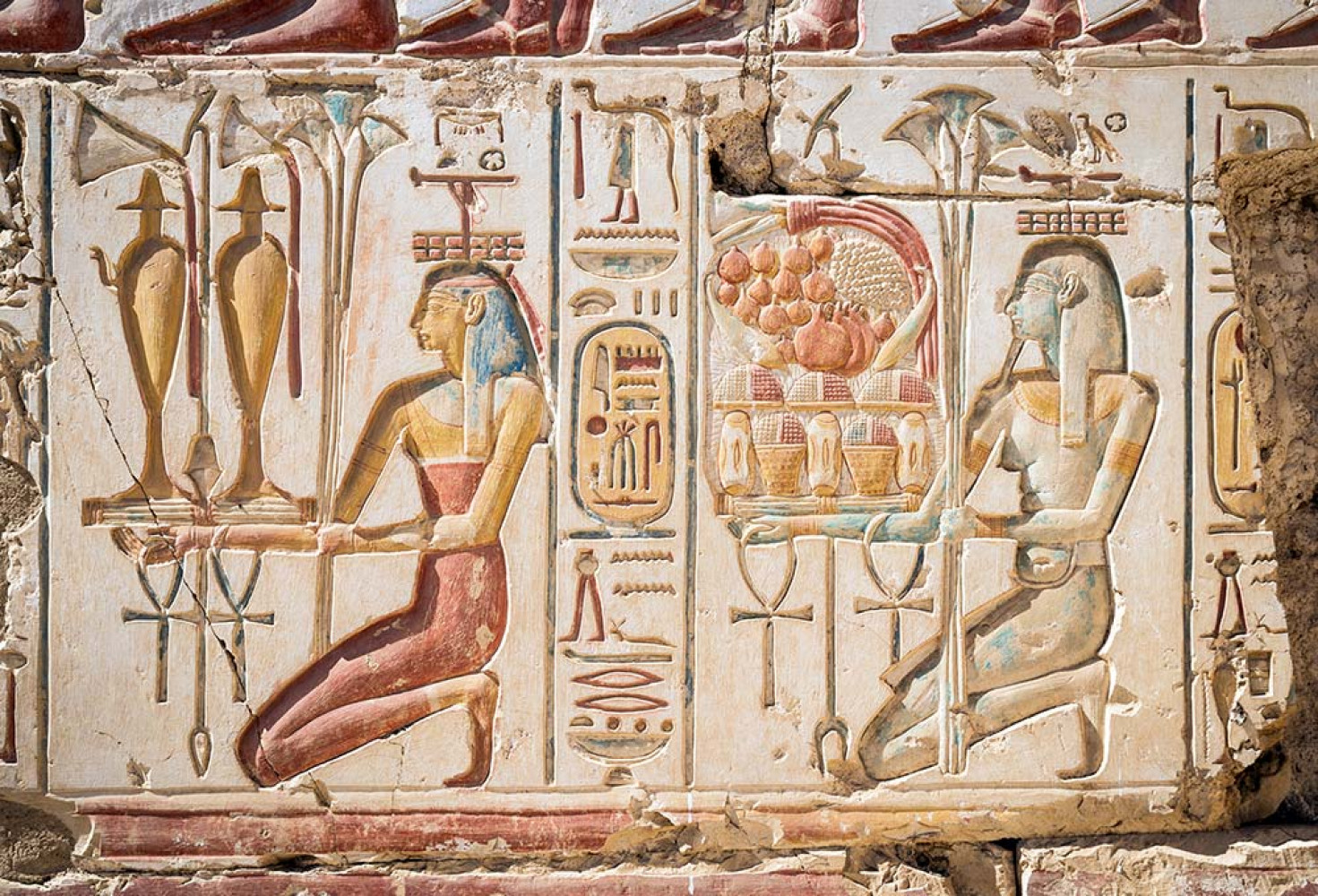Ancient Egypt, a civilization renowned for its monumental architecture and rich mythology, also gifted the world with one of the most enigmatic writing systems: hieroglyphs. These intricate symbols served not just as a means of communication, but as a profound expression of culture and belief. Unlocking the secrets of hieroglyphs is akin to peeling back the layers of time, revealing insights into the lives, thoughts, and spiritual practices of the ancient Egyptians. In this blog post, we will explore the origins and history of these mysterious symbols, discuss their meanings and significance, and delve into the methods and materials used in their creation. Join us on this fascinating journey to decipher the language of the past and understand its lasting impact on Egyptian culture.

Origin and History
The origins of hieroglyphs, which are intricate characters that were used in ancient Egyptian writing, can be traced back to approximately 3100 BCE, a time when the unification of Upper and Lower Egypt marked the beginning of the Early Dynastic Period, a significant era characterized by the establishment of monumental architecture and a central government, which necessitated a system of writing to document the affairs of the state. Hieroglyphs were not merely a form of written communication; they played a crucial role in the religious and cultural life of the ancient Egyptians, serving as a means for recording history and honoring the divine, as many of the symbols represented gods, worship, and the afterlife. As one leading Egyptologist stated, “Hieroglyphs were the language of the gods, bridging the mortal world with the divine.” Over time, this writing system evolved from a series of pictorial representations to a more complex form that included phonetic elements and ideograms, which allowed for greater expression and a wider range of meaning, thus enabling scribes to create detailed records, religious texts, and monumental inscriptions that celebrated the achievements of the pharaohs and communicated their divine authority. The advancements in hieroglyphs were not only a reflection of linguistic evolution but also represented the broader cultural and societal changes occurring within ancient Egyptian civilization, with advances in technology and trade further enhancing the development of writing practices. As such, hieroglyphs became a cherished element of Egyptian identity, encapsulating both the richness of their language and the impermanence of human existence. In summary, the history of hieroglyphs reveals an intricate relationship between language, culture, and spirituality in ancient Egypt, as this writing system underwent significant transformations while serving a multitude of functions, including administration, religious expression, and artistic endeavor. The representation of concepts and stories through these symbols laid the groundwork for future written languages, influencing subsequent cultures and civilizations and leaving an indelible mark on the history of writing. As we study hieroglyphs today, we gain insights not only into their linguistic structure but also into the daily lives, beliefs, and ambitions of one of the world's most fascinating ancient societies.
- The appearance of hieroglyphs around 3100 BCE signifies an important development in communication.
- Over the centuries, hieroglyphs transformed into a more complex and sophisticated writing system.
- They served as a vital link between the ancient Egyptians and their gods, showcasing their religious beliefs.
Understanding the origin and history of hieroglyphs provides a deeper appreciation of how this remarkable writing system has shaped our knowledge of ancient Egypt and continues to inspire exploration and wonder in modern times. With an array of s
Meaning and Symbols
Meaning and Symbols
Hieroglyphs, the intricate and captivating writing system of ancient Egypt, not only served as a means of communication but also embodied a rich tapestry of meanings and symbols that reflected the beliefs, culture, and daily life of the Egyptian civilization, where each symbol and character could convey profound significance that went far beyond mere words.
The use of hieroglyphs extended into the realm of religion, mythology, and governance, acting as visual icons that represented gods, pharaohs, celestial bodies, and even abstract concepts such as truth and justice; thus, understanding hieroglyphs requires an appreciation of the layered meanings they encapsulated, where every stroke, shape, and depiction had a purpose and conveyed a story of its own.
For instance, the Ankh symbol, often referred to as the key of life, was prevalent in hieroglyphs, symbolizing eternal life and immortality, while the scarab beetle represented rebirth and transformation, demonstrating how hieroglyphs were deeply intertwined with the spiritual beliefs of the ancient Egyptians, where each symbol was a doorway to understanding their view of existence and the afterlife.
| Symbol | Meaning |
|---|---|
| Ankh | Life and immortality |
| Scarab Beetle | Rebirth and transformation |
| Eye of Horus | Protection and royal power |
| Lotus Flower | Creation and rebirth |
| Owl | Wisdom and education |
In addition to spiritual and religious connotations, hieroglyphs were also used to portray everyday aspects of life, including professions, animals, and tools, which not only provided insights into daily activities but also illustrated the significance of various symbols that were essential for trade, agriculture, and social structure in ancient Egyptian society.
Furthermore, the versatility of hieroglyphs is evident in the various ways symbols could be combined to create new meanings, as individual characters could be used phonetically, meaning they could represent sounds of the spoken language, or as ideograms, which represented ideas or objects, thus demonstrating the complexity of this writing system that has captivated scholars and enthusiasts alike for centuries.
In summary, the meaning and symbols of hieroglyphs are steeped in rich cultural significance, serving not only as a means of communication but also as a reflection of the multifaceted beliefs and practices of ancient Egyptians, making the exploration of these symbols a fascinating journey through the past.
- Each symbol in hieroglyphs can represent a sound (phonetic) or an idea (ideogram).
- Common symbols include the Ankh for life, the scarab for rebirth, and the Eye of Horus for protection.
- The meanings of the symbols reflect the ancient Egyptians' intricate belief system and way of life.
Deciphering Hieroglyphs
The intricate world of hieroglyphs, with its thousands of symbols and complex meanings, often appears to be an impenetrable puzzle that has fascinated scholars, linguists, and archaeologists for centuries, and while the vibrant and evocative images may seem simple at first glance, the reality is that each symbol carries a rich tapestry of cultural significance, phonetic representation, and contextual relevance that must be carefully understood in order to fully appreciate this ancient writing system. Beginning with the foundational work of early Egyptologists, particularly the monumental achievements of Jean-François Champollion in the early 19th century, the process of deciphering hieroglyphs has come a long way from mere speculation to a comprehensive understanding based on linguistic principles, comparative analysis, and a plethora of archaeological evidence that has emerged over the years. As scholars continue to unpack the layers of this ancient language, the journey of deciphering hieroglyphs remains one of the defining intellectual pursuits in the study of ancient Egypt, not only illuminating the past but also enriching our understanding of human communication and expression.

Understanding the Basics of Hieroglyphs
The hieroglyphic system consists of three main types of characters: logograms, which represent words or morphemes; phonograms, which denote sounds; and determinatives, which offer context to clarify meanings, and this multifaceted nature ensures that a single symbol can convey multiple ideas depending on how it is utilized within a text. Recognizing these categories is crucial for anyone attempting to translate hieroglyphs effectively, as it allows for a more nuanced approach to understanding how these symbols interact with one another to convey complex thoughts and narratives. Furthermore, it is essential to note that hieroglyphs were not merely an arbitrary collection of signs, but rather an integral component of a sophisticated and evolving writing system that served various purposes, from monumental inscriptions to administrative records, thereby encapsulating the full breadth of ancient Egyptian life.
Challenges in Deciphering Hieroglyphs
Despite the considerable progress made in the field of Egyptology, deciphering hieroglyphs presents a number of challenges that can complicate interpretations and lead to misunderstandings, and these issues can arise from various sources, including the lack of complete texts, the presence of regional dialects, and the fact that many symbols had multiple meanings that could shift depending on context. Moreover, the encouragement of creativity and artistry in hieroglyphic inscriptions often means that artists would take liberties in the representation of symbols, which can further obscure their intended meanings and lead to ongoing debates among experts in the field. In addition to the linguistic hurdles, there are also cultural nuances to consider, as the ancient Egyptians often embedded their beliefs and values within their written words, requiring a deep understanding of their society in order to truly grasp the significance of what is being conveyed through hieroglyphs.
- Logograms: Represent entire words or ideas.
- Phonograms: Indicate sounds or syllables.
- Determinatives: Provide context to clarify meanings.
- Artistic representation and creativity can obscure meaning.
- Cultural nuances influence interpretations.
Purpose of Hieroglyphs
Purpose of Hieroglyphs The intricate and visually captivating system of writing known as hieroglyphs served a multifaceted purpose within the ancient Egyptian civilization, extending far beyond mere communication, as these symbols encapsulated the essence of their culture, religion, and governance, intertwining the practical with the spiritual in a manner that few other writing systems throughout history have achieved. At its core, the primary purpose of hieroglyphs was to record important information, such as royal decrees, religious texts, and the administrative activities of the state, thereby ensuring that key aspects of society were preserved for future generations, and in doing so, enabling a continuity of knowledge that was vital to the functioning of their complex society. Moreover, hieroglyphs were employed in ritualistic contexts, often inscribed in tombs and temples to invoke the divine, thereby ensuring security in the afterlife or celebrating the gods that the ancient Egyptians revered, demonstrating not only a functional aspect of recording but also a profound spiritual significance. Additionally, hieroglyphs held the purpose of functioning as a powerful tool for propaganda, as rulers and leaders would commission inscribed monuments and artifacts that extolled their virtues, depicted their achievements, and cemented their legacy within the annals of history, conveying messages to both the living and the spiritual world that were meant to inspire reverence and loyalty among the populace. This quintessential blend of religion and politics found expression through a series of hieroglyphic texts that glorified divine kingship and legitimized authority, creating a narrative that sustained the sociopolitical order of ancient Egypt for millennia. To further understand this duality in purpose, one can identify several functions that hieroglyphs fulfilled:
- Documentation: Hieroglyphs were utilized to document legal codes, transactions, and tax records, providing a written history for administrative purposes.
- Religious Significance: Many hieroglyphs were inscribed in temples and burial sites to invoke the favor of the gods or to secure a safe journey into the afterlife.
- Propaganda: Hieroglyphs served to promote the achievements of pharaohs, as monuments featuring inscriptions often depicted their victories and divine favor.
Ultimately, the purpose of hieroglyphs transcended their basic use as a form of writing; it was a potent medium through which the ancient Egyptians communicated not merely with one another, but with the divine realm, providing insight into their beliefs, social structures, and the way they sought to understand their place in the universe. This writing system embodies an intricate tapestry of meaning, capturing the essence of a civilization whose influence can still be felt in contemporary culture, as modern society continues to unravel the mysteries encapsulated in the symbols and meanings of hieroglyphs, ensuring that the legacy of ancient Egypt endures.
Methods of Writing
The ancient Egyptians employed various intricate methods of writing, which were not only practical but also deeply embedded in the cultural fabric of their society, showcasing the complexity and richness of their language through the use of Hieroglyphs, hieratic, and demotic scripts, each serving distinct purposes yet captivating in their artistic representation. Hieroglyphs were predominantly utilized for formal inscriptions on monuments and tombs, emphasizing the divine and the eternal, while hieratic, a more cursive form, found its place in religious texts and various administrative documents, enabling everyday transactions and communication among the literate class. Finally, the demotic script, which emerged much later, provided a simpler and more efficient way to write, further reflecting the evolving needs of society and cementing the adaptability and enduring legacy of ancient Egyptian writing. The methods of writing in ancient Egypt can be categorized into three primary forms:
- Hieroglyphs: Used mainly for monumental writing and religious texts, characterized by their elaborate symbols and intricate designs.
- Hieratic: A cursive form of hieroglyphs created for everyday writing, allowing scribes to transcribe texts more quickly and efficiently on papyrus.
- Demotic: An even more simplified version that became popular in later periods, primarily used for administrative and business documents.
As time progressed, these methods demonstrated the dynamic nature of communication in ancient Egypt, revealing how the need for efficient record-keeping and expression evolved with society, showcasing the significance of Hieroglyphs not merely as a tool for communication, but as an enduring symbol of cultural identity. Moreover, the simplification of writing styles, particularly with the introduction of demotic script, illustrated the influence of practical needs in shaping language while maintaining ties to the revered traditions embodied in hieroglyphic script, ensuring continuity even as the society itself underwent profound transformations. Ultimately, the methods of writing, diverse in their applications and forms, reflect the ingenuity of the ancient Egyptians and the lasting legacy of their sophisticated approach to communication, firmly securing Hieroglyphs as a cornerstone of ancient Egyptian culture and history.
Materials Used in Writing
The art of creating hieroglyphs, which are an integral part of the ancient Egyptian writing system, involved a variety of materials that not only facilitated the inscription of symbols but also contributed to the overall aesthetic presentation of the texts, which were often imbued with rich meanings and cultural significance. For instance, one of the most commonly used surfaces for writing in ancient Egypt was papyrus, a durable material derived from the pith of the papyrus plant, which allowed scribes to produce scrolls that could easily be rolled up and stored or transported. In addition to papyrus, other materials such as limestone, wood, and even pottery stood as alternative canvases for hieroglyphs, showcasing the Egyptians' adaptability and resourcefulness in utilizing the resources available in their environment. The use of ink in this intricate writing process often involved the blending of natural elements, which not only created diverse colors—typically black and red—but also allowed for remarkable durability and precision in the final inscriptions. According to historical findings, the black ink was derived from soot and mixed with water and a binder, while red ink was created from ochre, both of which were critical for highlight various features of the hieroglyphs or for denoting specific texts like titles and important sections. Overall, the combination of these materials not only evidenced the Egyptians' advanced understanding of chemistry but also reflected their cultural emphasis on beauty and detail in their written communication. To provide a clearer understanding of the materials used in writing hieroglyphs, consider the following list of some prominent substances and surfaces:
- Papyrus: Primarily used for scrolls and notebooks, made from the papyrus plant.
- Limestone: Utilized for carving permanent inscriptions, particularly in temples and monuments.
- Wood: Employed for tablets and wooden surfaces for temporary notes or documents.
- Pottery: Often used for administrative or religious texts, providing a unique medium to convey information.
- Ostraca: Fragments of pottery or limestone used for informal writings, such as notes or drafts.
In conclusion, the materials utilized in the creation of hieroglyphs not only underscore the sophistication of ancient Egyptian writing practices but also illustrate a profound respect for both the utility and beauty of their inscriptions, demonstrating how integral these elements were to the culture's identity and historical legacy. The range of surfaces and inks applied allowed for a high degree of expression and adaptability, which helped hieroglyphs thrive as a significant aspect of ancient Egyptian civilization, thus capturing the imagination and curiosity of scholars and enthusiasts to this day.
Evolution of Hieroglyphs
The evolution of hieroglyphs is not merely a tale of changing symbols, but rather a profound reflection of the cultural shifts, technological advancements, and administrative complexities that characterized the ancient Egyptian civilization over thousands of years, ultimately showcasing how this unique writing system adapted to meet the needs of a dynamic society. It is essential to understand that hieroglyphs were not static; they underwent significant transformations from their earliest forms to the more standardized scripts that emerged during the height of ancient Egyptian power, highlighting a gradual yet complex journey through history. Various forms of writing coexisted and influenced each other within the ancient Egyptian context, beginning from simple pictorial representations to more sophisticated ideographic and phonetic elements that played crucial roles in their communication and record-keeping. With the transition from the prehistoric period of ancient Egypt, the earliest symbols began to appear approximately around 3200 BCE, marking the inception of hieroglyphs, which were initially utilized primarily for monumental purposes, engraved on tombs and temple walls, celebrating the achievements of pharaohs and the divine. Over time, as the necessity for various forms of documentation grew, these hieroglyphs saw an adaptation that allowed them to be more versatile and applicable in everyday administrative tasks and record-keeping, leading to the development of cursive forms, such as hieratic and later demotic scripts. As we delve deeper into the phases of hieroglyphic writing, we can see that each evolution reflects the needs and innovations of the society—from the divine to the mundane—culminating in a writing system that was both an art form and a practical tool. The significant phases of the evolution of hieroglyphs can be categorized as follows:
- Prehistoric Hieroglyphs (Before 3200 BCE): Simplistic symbols used in cave art and small-scale carvings.
- Early Dynastic Period (3200-2686 BCE): Emergence of more complex symbols, primarily as religious and funerary inscriptions.
- Old Kingdom (2686–2181 BCE): The golden age of hieroglyphs, with the development of a more standardized symbol set used in monumental architecture.
- Middle Kingdom (2055–1650 BCE): Hieroglyphs became increasingly utilized for literary and administrative documents, showcasing a wider range of expressive potential.
- New Kingdom (1550–1070 BCE): The use of hieroglyphs expanded to include not just divine references but also detailed accounts of everyday life, within tombs and temples alike.
- Greco-Roman Period (332 BCE-395 CE): Introduction of external influences and the gradual decline of hieroglyphs as other scripts, such as Greek and Coptic, began to dominate.
As we progress in time, the hieroglyphic system experienced a decline, primarily due to the cultural changes brought about by foreign invasions and the spread of Christianity, which led to the diminishing use of hieroglyphs as a means of written communication. Nevertheless, the legacy of hieroglyphs has not vanished; rather, it continues to capture the imaginations of scholars, archaeologists, and enthusiasts alike, serving as a bridge to understanding the complexities of ancient Egyptian civilization. The study of hieroglyphs showcases not only the artistic prowess and intellectual achievements of the ancient Egyptians but also provides invaluable insights into their language, culture, and everyday life, resonating through history as a testament to their enduring civilization.
Significance in Ancient Egyptian Culture
The role of hieroglyphs in ancient Egyptian culture transcended mere communication, as they were deeply intertwined with the civilization's religious beliefs, social hierarchy, and cultural identity, thus serving as a vehicle for preserving and transmitting the profound spiritual and historical narratives that defined the lives of its people. Hieroglyphs were not only employed in monumental inscriptions on temple walls and tombs, celebrating the achievements of pharaohs and immortalizing their legacies, but they also assumed a sacred dimension, as the Egyptians believed that these intricate characters possessed divine power, making them essential for ensuring safe passage to the afterlife and facilitating communication with the gods. Consequently, the careful crafting and placement of hieroglyphs became a ritualistic practice within the ancient Egyptian society, underscoring their significance as a bridge between the earthly and the divine.
The Connection Between Hieroglyphs and Religion
The religious dimension of hieroglyphs was critical, as these symbols were frequently utilized to depict deities, sacred texts, and funerary inscriptions, which were integral to the elaborate rituals and belief systems that permeated ancient Egyptian life. In temples, inscriptions served as offerings to the gods, while in tombs, they provided essential guidance for the deceased in the afterlife, ensuring that their spirits could navigate the challenges they encountered beyond death. This deep interconnection between hieroglyphs and spirituality illustrates how this writing system not only conveyed information but also reinforced the cultural values that defined the ancient Egyptians' understanding of existence, mortality, and the afterlife.
Hieroglyphs as a Mark of Status
In addition to their spiritual importance, hieroglyphs also functioned as a marker of social status and educational achievement, as literacy in this sophisticated script was primarily reserved for the elite, including priests, scribes, and pharaohs, thereby establishing a clear delineation between the educated few and the unlettered masses. The ability to read and write hieroglyphs not only conferred power and prominence but also facilitated a sense of unity and shared identity among those who mastered this complex script, as it connected them to the rich heritage of their ancestors and the vast cultural achievements of ancient Egypt. Ultimately, hieroglyphs served as a cornerstone of ancient Egyptian civilization, reflecting its social structures, values, and aspirations while leaving an indelible mark on the pages of history.
- Hieroglyphs as a portal to the afterlife
- Their role in preserving sacred myths and religious texts
- Connection to the nation’s identity and cultural heritage
- Representation of power through royal inscriptions
- Emphasis on the eternal nature of the written word
Frequently Asked Questions
What are hieroglyphs?
Hieroglyphs are a system of writing used in ancient Egypt, composed of pictorial symbols that represent sounds, ideas, and objects.
How did the ancient Egyptians use hieroglyphs?
The ancient Egyptians used hieroglyphs for religious texts, monumental inscriptions, and governmental records, often carved into stone or written on papyrus.
What are the different types of hieroglyphs?
Hieroglyphs can be categorized into three types: logograms which represent words, phonetic symbols which represent sounds, and determinatives which clarify the meaning of words.
Why was the Rosetta Stone important?
The Rosetta Stone was crucial because it contained the same text in three scripts: Greek, Demotic, and hieroglyphs, which allowed scholars to decode hieroglyphs for the first time.
What role did hieroglyphs play in ancient Egyptian religion?
Hieroglyphs played a significant role in ancient Egyptian religion by inscribing spells and prayers on tombs and temples to ensure safe passage and protection in the afterlife.
Are there modern uses of hieroglyphs today?
Today, hieroglyphs are primarily studied in the fields of archaeology and linguistics, but they also appear in popular culture, art, and typography.
How has the understanding of hieroglyphs evolved over time?
The understanding of hieroglyphs has evolved from their initial misinterpretation by early scholars to a more accurate comprehension achieved through discoveries like the Rosetta Stone, allowing for accurate translations and insights into ancient Egyptian culture.




